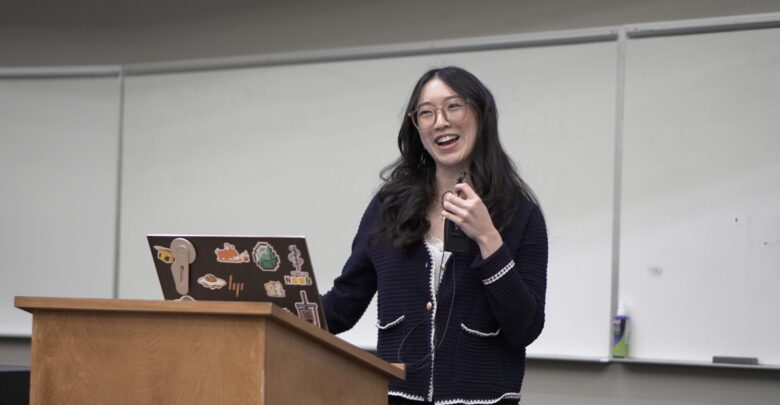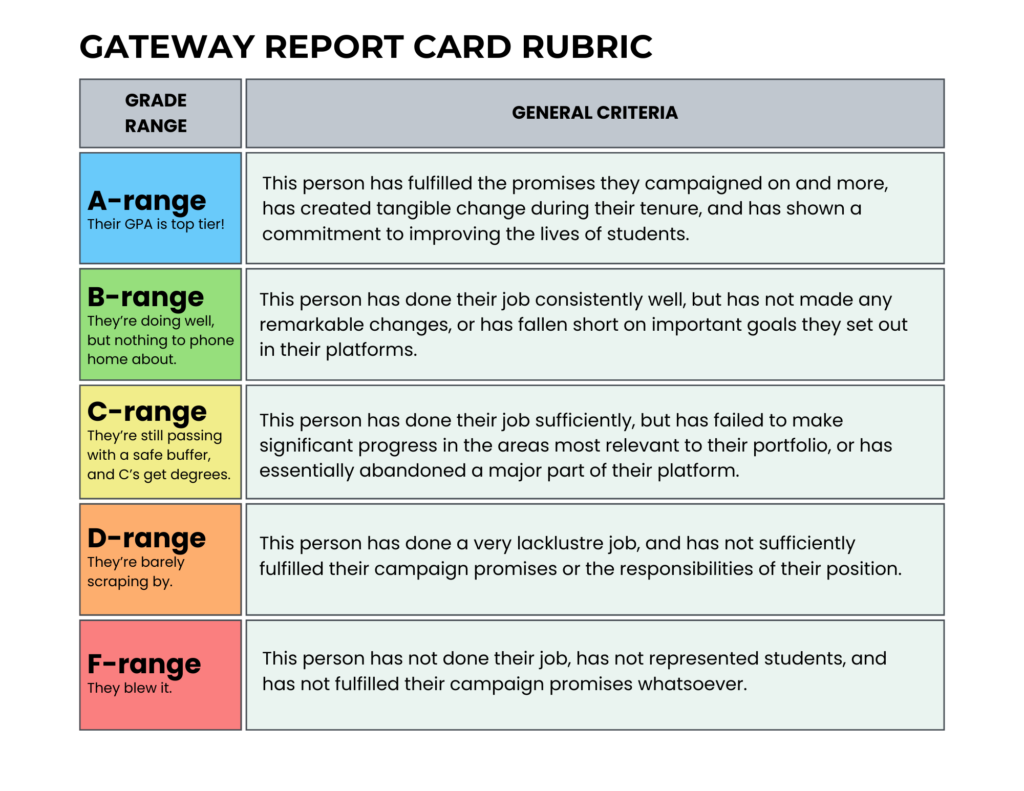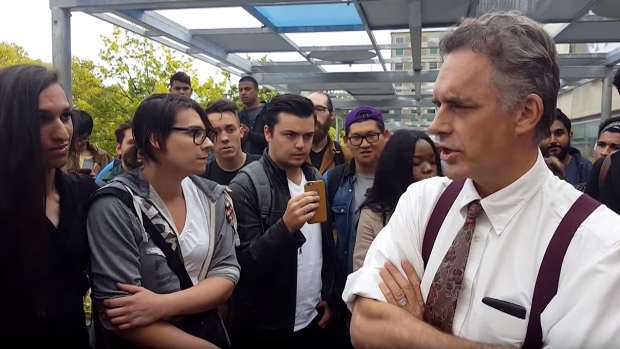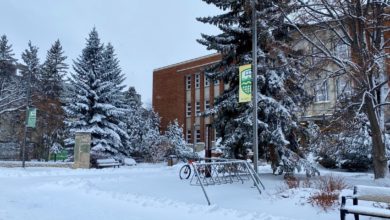 Lily Polenchuk
Lily Polenchuk Each year, The Gateway publishes an evaluation of the Students’ Union Executive and the Board of Governors representative. It’s impossible to discuss every aspect of their tenures, so these reports are largely based on the major components of the platform each executive campaigned on, and the most significant responsibilities of their respective positions. The grading rubric can be found at the bottom of the article.
And if you’re short for time, check out our TL;DR for a bite-sized breakdown towards the end of the article.
Adrien Lam: A+
The Board of Governors (BoG) representative is responsible for representing the student body on BoG and the General Faculties Council (GFC). Unlike the University of Alberta Students’ Union (UASU) executives, the BoG representative largely works independently. Adrien Lam campaigned on a small platform and delivered on it. But she didn’t stop there. She took on more work and managed to establish close relationships with university administrators.
Building a survey platform for student engagement
Lam’s biggest platform point was to create an online platform where students could anonymously share their concerns. She would then take these concerns to BoG. While Lam had been initially criticized for leaning so hard into this during her campaign, it has proven to be a valuable asset.
Lam has been able to garner over 700 responses, though she noted in an interview with me that doesn’t necessarily mean 700 different students. With those responses, she’s been able to quantify what students’ biggest issues are. This not only allowed Lam to understand and target those issues, but also to use this data in her advocacy.
And building an entire website is no small undertaking. Neither is keeping it up and running. An issue that sometimes comes up with elected student leaders is disconnection between them and students once they take office. Lam was able to avoid that with this platform. Not only have students engaged with it, but she has paid close attention to what they’ve been saying.
Another plus of the platform is that it’s anonymous. Some students might not want to send an email or talk to a student representative in-person for a variety of reasons. Anonymity gives them a safe place to share their concerns.
According to Lam, the response from the university has been great. She said that Carrie Smith, vice-provost (access, community, and belonging) (ACB), expressed interest in working with Lam because of the data her platform collects. According to Lam, using the data to gauge the success of the Student Experience Action Plan (SEAP) was of particular interest for Smith. Lam said the Dean of Students (DoS) office has also shown interest in seeing the data she collects.
Garnering that level of interest from university administration is no small feat. Disinterest in engaging with students seems to be common with university administration. Yet, Lam was able to overcome that challenge.
When I asked if a future BoG representative could use this platform, Lam said they could. She did note that it would be up to them to decide whether or not to use it. Then, they would be responsible for the upkeep of the website. That responsibility may dissuade future BoG representatives, as there’s no administrative support from the UASU. But future representatives would be fools to not take advantage of what Lam has established.
But Lam didn’t hide behind a survey to engage with students either. She mentioned going to events on various campuses to connect with students. Additionally, she has used her Instagram account for both fun and informative content. Though her predecessor, Stephen Raitz, paid far more attention to social media during his term, Lam hasn’t neglected her own social media by any means.
Establishing strong relationships with university administrators
The BoG representative spends a lot of time in governance meetings, not just attending but prepping for them as well. This is typically their main way of getting the university to hear student voices. Lam, however, has gone well beyond that.
Lam has consistently been able to engage with the DoS and ACB office throughout her term. She also mentioned various meetings with Provost and Vice-president (academic), Verna Yiu. These relationships aren’t always easy to build, but Lam has been able to not only establish them but use them to advocate for students’ needs.
Lam has been working with the DoS, Ravina Sanghera, and Yiu to explore ways the university can support the Campus Food Bank (CFB). The CFB has seen a significant spike in demand, and with that comes a spike in costs. Currently, the CFB receives no funding from the U of A, despite the U of A often talking about CFB as a university service.
Working with Sanghera and talking with CFB’s outreach manager, Caitlin Chyczij, Lam has been working towards changing that. She’s now working up to pitching the idea of university funding for CFB to Bill Flanagan, U of A president and vice-chancellor.
She’s also been working to get a space for student-parents at Campus Saint-Jean (CSJ). North Campus currently has a Family Corner, which students who are parents can use. CSJ doesn’t have the same. Lam said they have the supplies for such a space, but it’s a matter of securing a physical space for it. Once again, Lam has been working with Sanghera to find the right people to talk to about this. This is an important step in addressing the needs of student caregivers. Even if Lam isn’t able to see this through before the end of her term, having the DoS office involved gives me hope this will continue beyond Lam’s term.
Another project she’s been working on is finding better and more affordable support for international students. Lam mentioned that international students may not have the money to spend on getting their applications, cover letters, or essays edited by another person. So instead, along with Smith, Lam has been exploring ways to find graduate students who would be willing to do so for free. Getting support from the university is a big step towards making this type of initiative a reality. This once again goes to show the value in building meaningful relationships with university administrators.
Using data and consultation to be a strong advocate for students
In our interview, Lam also mentioned her work during and after the removal of the Palestine-solidarity encampment. The encampment started on May 9, 2024 and the university decided to have Edmonton Police Service (EPS) remove it in the early hours of May 11, 2024. According to Lam, administration wasn’t engaging with students at the time of the encampment, so she tried to act as an intermediary. While her survey wasn’t up and running by that point, she said she went to the encampment and spoke with students there. Lam took notes on what they said to bring their concerns back to U of A administration.
Lam also said she went to the University of Calgary to talk to students there about their concerns and experiences with the encampment there. She was able to take that feedback to Flanagan in June, though they were initially supposed to meet earlier. In that meeting, she said she not only relayed students’ concerns, but also addressed Flanagan’s statements in The Quad. She expressed that trust had been broken because of the gap between what the U of A was saying and what students said happened at the encampment. She specifically noted equipment as an example, as the statements characterized some objects as “potential weapons.”
In other meetings with Flanagan, she highlighted the need to bring the U of A Sexual Assault Centre (UASAC) back to normal operations. UASAC’s hours and services had previously been reduced after the university fired the director in November 2023. Lam also pushed for more information for students about what the hours were as UASAC resumed normal operations. These were both important issues to many students. It’s great to see Lam using meetings directly with Flanagan to raise these issues.
In late March, BoG will vote on whether or not to approve the proposed tuition increases. University administration has proposed tuition increases of two per cent for all domestic undergraduates come fall 2025 and 10 per cent for international undergraduates beginning their degree in fall 2026. According to Lam, she’s using her survey platform to gather more information from students about tuition increases. With that data, she can make an argument at BoG.
She also noted approaching the conversation from the university’s perspective to try to sway them. Making the argument that raising tuition will actually be bad for business was mentioned. Not only leveraging her data, but angling her argument effectively is a smart approach.
Lam has proven that her survey platform and the data from it is invaluable. But she doesn’t just rely on data to do the work for her. She has built meaningful relationships with the Office of ACB, DoS, and other administrators. This all paves a path for student advocacy and change.
TL;DR: Ultimately, Lam has done a lot of advocacy for one person with limited resources. Her survey platform has become invaluable to her work and has the potential to do the same for future BoG representatives. She’s built strong relationships with university administrators which have helped her target specific issues for students.





